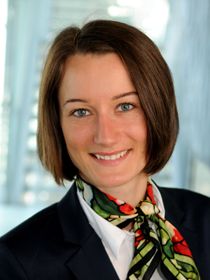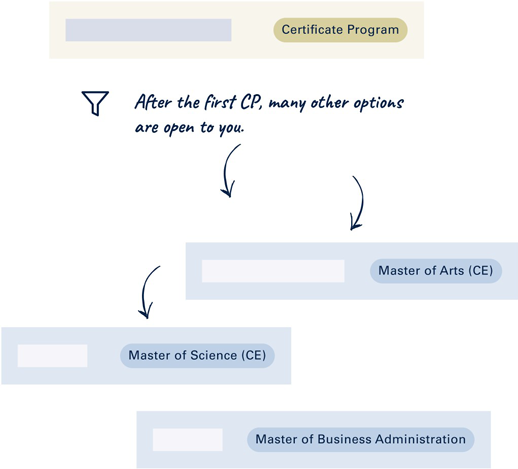-
Graduation
Certificate
-
ECTS-Points
24
-
Learning format
-
Duration
2 semesters, part time
-
Start
Summer semester 2026, Krems
-
Costs
ca. € 4.440
-
Admission requirements
According to curriculum
-
Language
English
-
Curriculum
Subject to Senate approval
-

Graduates of the CP will be able to take the lead in preparing emergency plans for cultural institutions, with a focus on movable cultural property, and to test these plans with the emergency services.
The "Emergency Planning in Cultural Property Protection, CP", is a Stackable Program and can be flexibly combined with other continuing education programs up to the "Cultural Property Protection, MSc (CE)". The staggered modules of the CP offer our students greater flexibility and better integration into their working lives.

Highlight of the CP is the preparation of an emergency plan for a selected museum and the final testing with emergency services!
Ass.-Prof. Mag. Dr.
Anna Maria Kaiser
Study Program Director – Center for Cultural Property Protection
Any questions?
We’re here to help.

Ass.-Prof. Mag. Dr.
Anna Maria Kaiser
Study Program Director
Or contact us directly.
Benefit from our study program
- Providing in-depth theory and tools for the strategic development of emergency plans
- Cooperation and exchange with interdisciplinary professionals and institutions on an equal footing
- Immediate transfer of profound theory into practice through authentic disaster simulations to enhance operational competences
-
innovative teaching methods
-
practice-oriented
-
interdisciplinary
Curriculum
The "Emergency Planning in Cultural Property Protection, CP" (24 ECTS) can be completed on a part-time basis within 2 semesters.
Duration of the modules: 5-6 days each
Module 1: Emergency Planning
The CP starts with an introduction to emergency planning for movable cultural property, including crisis management, the national legal framework and the identification and assessment of threat scenarios to cultural property.
Module 2: Material Handling and Building Safety
The second module is dedicated to the handling of various materials, with a focus on preventing further damage when movable cultural property needs to be moved. The module also provides an introduction to collection management and inventory, as well as basic structural principles for assessing whether a building is still safe to enter.
Module 3: Collaboration with Emergency Responders
Module 3 consists of the guided development of an emergency plan for a self-selected museum, archive or library, in which the identification of cultural property and prioritisation options play an important role. An essential part of this module is also the cooperation with the persons in charge of the selected site, as well as with the emergency services, who may also be called upon to assist in the protection of cultural property if necessary. The CP concludes with a cultural property evacuation exercise organised by the students in cooperation with the local emergency services. Completion of the CP will enable students to prepare emergency plans for cultural institutions, with a focus on movable cultural property, and to test the plans prepared in cooperation with local emergency services.
- Module 1: Emergency Planning [6 days]: planned for March 2026
- Module 2: Material Handling and Building Safety [6 days]: planned for June 2026
- Module 3: Collaboration with Emergency Responders [6 days]: planned for October 2026
Study Program Director
The study program director is Anna Kaiser, Assistant Professor and Head of the Center for Cultural Property Protection. Her research themes predominantly orbit around the protection of cultural property, integrating a multidisciplinary approach that spans ancient history, military studies, and contemporary strategies for safeguarding heritage. Her methodological expertise lies in combining historical analysis with practical military training, emphasizing the application of strategies for protecting cultural heritage in conflict zones and disaster-prone areas.
The lecturers of the CP consist of a large number of renowned international experts from various disciplines with civilian and military backgrounds. They are all involved not only in theoretical and applied research but also in the practice of cultural heritage protection. This ensures that the latest state of research and knowledge is conveyed.
Stackable Program
In combination with other continuing education programs, Stackable Programs can be combined to achieve an academic degree.


The Stackable Program offers me complete flexibility in the design of my studies.
Tatjana Kohl
Student
Pre-register now
Admission requirements
- university entrance qualification (or equivalent training at least at NQF level IV) OR at least 2 years of relevant professional experience
- appropriate knownledge of English
- successful completion of an interview with the study program director
Pre-Registration
- Download and complete the Pre-Registration Form "Emergency Planning in Cultural Property Protection".
- Click on the button "Pre-register now" and upload the completed Pre-Registration Form in the designated section of the form. Please specify your preferred times for a personal online interview, during which we can clarify your expectations of the continuing education program and verify the admission requirements.
- After your binding pre-registration, we will contact you for further information.
Follow-up studies & programs
Cultural Property Protection Exercises
Tags

